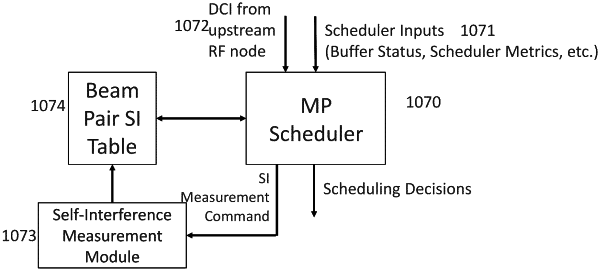| CPC H04L 25/0204 (2013.01) [H04L 25/0212 (2013.01); H04L 25/0242 (2013.01); H04L 25/021 (2013.01); H04L 25/025 (2013.01); H04W 84/18 (2013.01)] | 20 Claims |

|
1. A method comprising
receiving a signal at a node of an orthogonal frequency-division multiplexing wireless communication network from another node of the wireless communication network, the received signal including a desired signal component and a self-interference signal component,
performing a joint channel estimation process on a self-interference signal channel in a time domain and a desired signal channel in a frequency domain, the desired signal channel being associated with the desired signal component, the self-interference signal channel and the desired signal channel having respective frame timings that are not aligned, and
applying a cancellation process to the received signal based on the estimated self-interference signal channel.
|